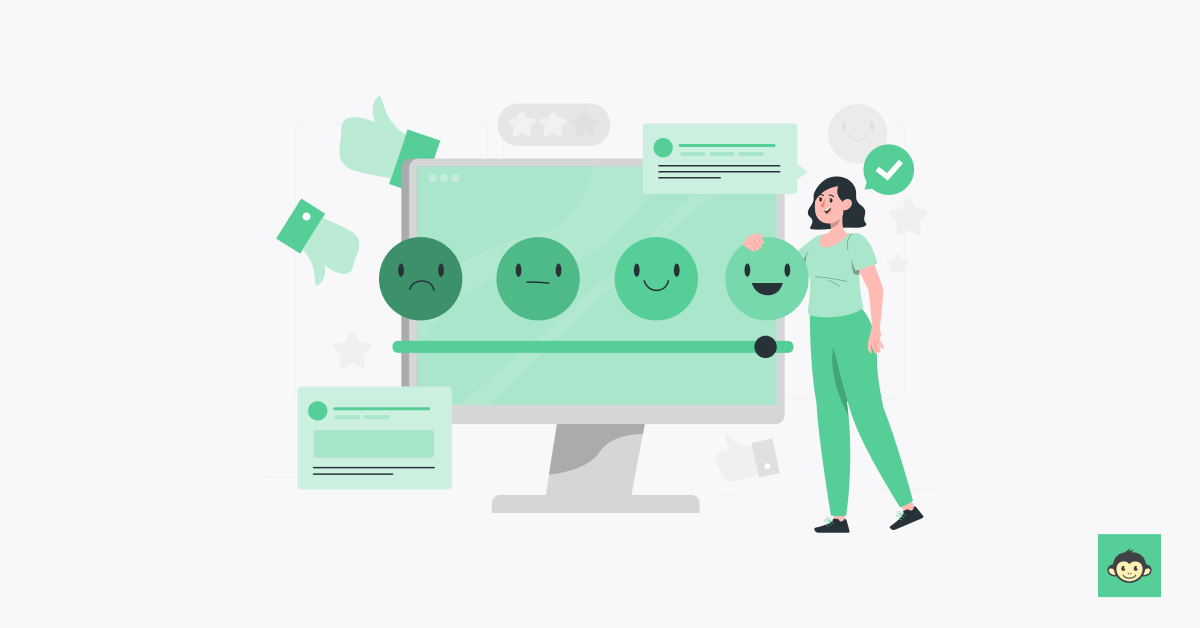Top 10 employee engagement strategies for Marketing and Advertising teams in 2024

Remember when campaigns and KPIs were all that mattered? Times have changed. Now, every marketing and advertising team focuses on a solid employee engagement strategy.
Why? Engaged employees with a good employee experience boost culture and drive innovation. This helps build successful campaigns and happy clients—a win-win.
But what does strong employee engagement look like for marketing teams? That’s exactly what we will explore in the article – 10 employment engagement strategies to put those productivity hats on.
What is employee engagement?

Employee engagement measures how excited and committed someone is to their work and company. It goes beyond just liking their job. Engaged employees dive into their tasks and care about helping the company succeed.
They often do more than asked, making the workplace better and more productive.
Here's how you can tell if an employee is truly engaged:
- They're more efficient and productive, often going beyond what's expected to achieve goals.
- Their work is of a higher quality, with a clear attention to detail.
- They're consistently present and contribute actively.
- They have a positive attitude, making the work atmosphere better for everyone.
- They're more likely to stick around, reducing the need for frequent hiring and training of new people.
- Innovation is part of their approach; they're always ready with new ideas and solutions to move the company forward.
If it feels like your team's not quite there yet, don't worry—the next part will help you find the best ways to ramp up their engagement.
10 Employee engagement strategies that work

Companies with high employee engagement levels see 22% higher productivity. If you’re all about excellence, here are 10 highly effective engagement strategies to help you elevate your team's performance and creativity.
1. Implement regular idea-sharing sessions
For most leaders, encouraging idea sharing is a key part of their strategy, and for good reason. A single idea can potentially bring huge growth. Take Amazon Prime, for example – it all started with an employee typing a few words into a digital suggestion box.
Here’s how you can implement this into your strategy:
- Set aside a dedicated time each week or month for your team to gather specifically for brainstorming. This regular schedule ensures everyone knows when to bring their ideas to the table.
- Create a supportive atmosphere where creativity is not just welcomed but celebrated. Emphasize that there's no such thing as a bad idea to encourage free-flowing creativity.
- Use online collaboration tools for remote teams, organize walking meetings, or conduct themed brainstorming sessions. These will keep the energy high and the ideas fresh.
- Bring in fresh eyes by inviting members from other departments to join in occasionally. Their different perspectives and insights might just spark something new and valuable.
2. Leverage CultureMonkey for real-time engagement insights
Without knowing your actively disengaged employees' challenges or areas where your company can improve, it's hard to know where to begin. Real-time insights come into play here.
They help pinpoint what's working and highlight areas needing a boost. CultureMonkey provides exactly that. This platform tracks key engagement metrics and supports you in creating targeted actions for your team. Here are its key features:
- The platform analyzes and helps you collect employee feedback to find areas to improve.
- It offers strategies to encourage engagement, using surveys to gather insights and spot opportunities.
- It tracks important metrics like Employee Engagement Score, Survey Participation Rate, and more.
3. Recognize & reward creative efforts
Creativity, like any other effort, needs recognition and reward. When you celebrate your employee's wins - small or big - it encourages them to keep pushing boundaries.
In a recent employee recognition survey, 59% of respondents felt that being recognized for their accomplishments at work was the sole contributing factor to their sense of belonging. This, in turn, enhanced their commitment and loyalty to the team and organization.
How do you instill this sense of belonging? Consider the following:
- Personalize recognition to make it meaningful. Whether it’s through public acknowledgment, awards, or personalized gifts, ensure the reward resonates with the individual's interests and contributions.
- Implement a reward system that acknowledges both small creative efforts and major achievements. This could range from "Idea of the Month" awards to significant year-end bonuses for groundbreaking innovations.
- Provide opportunities for professional growth as a reward. Offer access to workshops, courses, or conferences that can help employees expand their skills and knowledge in areas they're passionate about.
- Encourage peer-to-peer recognition by setting up platforms where employees can acknowledge each other's creative contributions and achievements. This fosters a supportive culture that values creativity and hard work.
Example: Pixar Animation Studios
Pixar uses a special approach called the "Pixar Braintrust." In these meetings, creators share their projects and get advice from others. It's a way to improve their work and show that everyone's ideas matter.
Pixar also has "Pixar University," offering classes like drawing and storytelling. This lets people improve their skills and explore new interests.
Through employee engagement efforts, Pixar shows they care about their team's creativity. They encourage everyone to keep learning and innovating.
4. Map out personal growth paths
Nowadays, more people are "quiet quitting" at work - they only do the bare minimum to avoid getting fired. To fight this, focus on developing your employees. This makes work more exciting by pushing them to keep learning and face new challenges.
Start by rolling out personal development plans for everyone. These plans make their day-to-day work more interesting by setting clear, reachable goals. They lay out a path with steps that employees can follow, turning their jobs into an adventure of personal and professional growth.
Employee development plans can vary because they should match what the employee wants to achieve. But no matter the plan, make sure to cover:
- Ways to measure progress
- Their goals for the near future
- Key dates and milestones to hit
- What they aim to achieve in the long run
- Regular check-ins to see how they're doing
You'll also need to think about finances. How much can you spend on this plan?
Don't forget, you're not just covering the costs for things like courses or certificates. You also need to consider the work they won't be getting done while they're learning and the time taken by whoever guides them, whether that's you or someone else.
Yes, you'll see a dip in how much they get done at first. But the idea is this investment should pay off with better skills and productivity down the line.
So, how can you develop this personal growth plan for your employees, and what are the key points to look for?
- First, check what each employee is good at and set goals that fit what they want to achieve and what your company needs. Let’s take the example of this ingredient supply business. Get your team to learn about where ingredients like amino acids and antioxidants come from and how they're used, especially their benefits in nutraceuticals for health. This kind of knowledge will make your products stand out.
- Then, lay out clear steps to hit these goals. This might mean signing them up for courses in molecular biology or biochemistry that zoom in on amino acids and enzymes. Also, set up sessions with pros in the field to get a deeper look at how these elements change the game in supplements.
- If it makes sense, look into different graduate programs or special classes that can level up their know-how and career path.
- Make sure they have what they need to reach these goals, too. This could be access to learning sites online, key books, or networks in their field.
5. Foster a team culture of support and inclusivity
A supportive and inclusive team culture makes every team member feel valued and understood, which directly impacts their engagement and loyalty. When we get this right, it means every person on the team can show up as their full selves, share their unique ideas, and feel genuinely valued—not just for the work they do but for who they are.
Here’s how you can implement this:
- Hold weekly or biweekly open forums and team meetings where everyone can speak freely and share their thoughts. This promotes a sense of belonging.
- Conduct workshops to educate your team on the importance of diversity and inclusivity, teaching them how to embrace differences and recognize unconscious biases.
- Highlight and celebrate the diverse backgrounds of your team members by organizing cultural appreciation events and spotlighting individual stories in your company newsletter.
A key part of creating this workplace culture is ensuring new team members feel welcome and part of the team immediately. Using a thorough employee orientation gives new employees the info and insights they need to become important members of your team.
Real-life implementation: Google
Google stands out as a beacon for fostering this environment:
- Google encourages 'TGIF' meetings (Thank God It's Friday), where employees at all levels can ask questions directly to the company's leaders, building an atmosphere of openness and mutual respect.
- They run comprehensive employee engagement programs and workshops focusing on understanding diversity, equity, and inclusion. These initiatives are designed to educate employees on recognizing and valuing differences, as well as identifying unconscious biases.
- Google celebrates diversity through Pride Month celebrations and Black History Month, showcasing the diverse cultures and backgrounds of its workforce.
6. Prioritize comprehensive wellness programs
Your employee’s health is absolutely vital—it’s what your thriving workplace is built on. When your team is healthy and happy, they are more productive.
What better way to do this than with a comprehensive wellness program?
A well-rounded wellness program addresses the full spectrum of employee health—physical and mental. It shows your team that you care about them as whole people, not just as workers.
Here's how to roll out a program that hits all the marks:
- Start with a suite of wellness activities. Think about bringing fitness classes to the office or setting up mental health days for everyone to recharge. You can offer workshops for stress management or bring in experts to give advice on healthy eating.
- Give your team the chance to personalize their health journey. For instance, if someone is passionate about fitness and interested in high-protein diets, plant-based nutrition, or endurance training, support them with resources that cater to these interests. This personalization demonstrates your commitment to their health and encourages them to engage more deeply with the wellness initiatives offered.
- Regular wellness check-ins are key, too. Have managers sit down with their team members to discuss their feelings. These conversations can catch issues before they become big problems and show your employees that their health is a top priority.
7. Equip teams with cutting-edge tools
Having the right tools can dramatically increase productivity and creativity. These tools are meant to streamline work, facilitate collaboration, and reduce time spent on menial tasks.
Meanwhile, employees can focus on the more engaging employees and innovative part of their work. Here are the best tools to consider:
1. Project management:
- Asana: Keeps projects organized and on schedule.
- Trello: Offers a visual way to manage projects with boards and cards.
2. Communication:
- Slack: Facilitates easy team communication and collaboration.
- Microsoft Teams: Combines workplace chat, meetings, notes, and attachments.
3. Video conferencing:
- Zoom: Offers video and audio conferencing, with screen sharing and other features.
- Google Meet: A secure video conferencing solution integrated with Google Workspace.
4. Cloud storage and collaboration:
- Google Drive: Stores files in the cloud, sharing, and collaborating in real-time.
- Dropbox: Cloud storage solution for file sharing and collaboration.
5. Productivity:
- Microsoft 365: Offers productivity tools including Word, Excel, PowerPoint, and more.
- Notion: An all-in-one workspace for notes, tasks, wikis, and databases.
For teams juggling sales across different online platforms, adding a tool that makes this easier can help. Using a platform that simplifies handling multi-channel eCommerce lets everyone work more flexibly and efficiently, making the team happier and more satisfied with their jobs.
8. Create a culture based on continuous feedback
27% strongly agree the feedback they receive helps them do their work better.
A culture of continuous feedback empowers employees to grow and improve constantly. It encourages open communication and reinforces the idea that everyone is working together towards common goals.
Regular feedback also allows for quick adjustments and fosters a proactive approach to solving problems and seizing opportunities.
How to implement:
- Establish regular cycles for performance reviews and feedback sessions, not just annually but possibly quarterly or even monthly. This keeps goals and expectations aligned and allows for timely adjustments.
- Implement a 360-degree feedback system where employees receive constructive feedback from peers, subordinates, and managers. This offers a comprehensive view of their performance and areas for improvement.
- Ensure that feedback sessions are not just about giving and receiving feedback but also about creating actionable plans for improvement. This involves setting specific goals, offering necessary resources for development, and scheduling follow-ups to discuss progress.
9. Align compensation with industry standards & beyond
Consider fair and competitive compensation to keep your employees engaged and on board. It’s all about showing your employees how much you value their hard work.
Now, there’s a smart way to stay competitive without spending a fortune. How about going global to find amazing talent? This move can help you save on hiring costs, while still offering top-notch compensation packages that are as good as, or even better than, what’s out there.
This approach does wonders. It keeps your current team happy and on their toes, and also pulls in the best of the best, making sure your crew is both talented and dedicated.
Here’s how to get there:
- Start with solid market research to get the lay of the land on pay scales within your industry. This could mean diving into salary surveys, chatting with industry groups, and maybe even bringing a compensation expert on board.
- Craft compensation packages that stand out. Think about adding in bonuses, better health coverage, retirement benefits, and perks that make life easier, like flex hours or the option to work from home.
- Don’t forget about rewards for those who go above and beyond. Performance incentives can light a fire under your team, pushing them to excel and directly tying their achievements to the broader goals of your business.
10. Integrate work-life balance initiatives
Promote work-life balance to keep your team happy, healthy, and free from burnout. When people know you respect their personal time, they bring more energy and focus to their work hours.
Here’s how you can make it happen:
- Start with flexible working options. Offer telecommuting or varied hours to fit different lifestyles, whether it’s parents juggling childcare or employees with longer commutes.
- Push for everyone to use their vacation days. Maybe even set rules that discourage after-hours work. Everyone needs a real break to perform their best.
- Shape policies with empathy. Think about what support your team might need, from parental leave to time off for community service.
Also, add more tools and information to your Employee Assistance Program (EAP) to tackle personal and work-related challenges.
For example, include services like mental health support and emergency response solutions like medical safety equipment in your EAP. This gives your team several resources for their well-being, all without the need to directly implement these solutions at work.
By doing this, you're ramping up your support, making sure your marketing team can easily manage their health, safety, and mental well-being, all of which contribute to a healthier work-life balance.
How to develop an employee engagement strategy that works?

Developing an effective employee engagement strategy requires a thoughtful approach that considers your organization's unique needs and culture. Here's how to get started:
Conduct surveys to understand employee needs
Use anonymous surveys to understand what your employees need. These surveys are a powerful way to gather sincere feedback on what’s going well and what areas need improvement. It’s a clear signal that you value their input and are committed to making positive changes.
Consider our employee engagement survey. The insights allow you to spot trends and pinpoint specific needs—whether that’s better communication, stronger leadership, or more opportunities for advancement.
With these tools, you can tailor your surveys to focus on specific concerns like job satisfaction, feelings towards management, and perceptions of the company culture.
After collecting this insight, look into the feedback – identify your strengths and the areas where you can enhance.
Set clear goals & expectations
When employees know exactly what their job entails, how their efforts make a difference to the company, and the opportunities available for growth, they feel more secure and motivated.
Start by making sure each marketing team member knows their role inside out. This means laying out their daily tasks, long-term projects, and how their work fits into the bigger picture.
It’s about connecting the dots between what they do every day and the company's overall success. When people see how their work contributes, they're more likely to take pride in their job and push harder.
Next, talk about growth opportunities within the company. Everyone wants to know there's a path forward for them. Discuss skills they can develop, the training they can undergo, and the potential career paths available. This shows that you’re invested in their future, not just what they can do for you now.
Keep these conversations ongoing. Regular check-ins where you discuss progress towards goals, offer feedback and adjust expectations as necessary can keep everyone aligned and focused. It also provides a chance to celebrate achievements and tackle any roadblocks together.
Offer personal & professional development opportunities
Help your team grow by offering different types of learning like workshops, training, and chances to move up in their careers. These sessions keep their skills sharp and up-to-date with what's new in the industry.
Workshops let them dive deep into specific areas, like learning new software, improving how they communicate, or getting better at leading.
To keep pace with today's market, consider broadening the scope of these learning opportunities. For example, instead of just focusing on specific skills like software use, include training on broader competencies that have a wide impact
Encourage employees to dive deeper into digital marketing course and online engagement tactics. Picture them creating posts that really connect with people or pinpointing the perfect posting times for the biggest effect. Mastering selling strategies on platforms like TikTok will increase how visible and engaging your brand is.
Using these platforms smartly can also teach your team key skills. This makes them more flexible and sharp in the competitive market.
Lead by example
Leading by example is crucial. It means that the leaders in your company need to walk the walk, not just talk the talk. They should live out the company's values and show the kind of behavior they want to see in their team.
For instance, if collaboration is a key value, leaders should be the first to reach out, work with others, and share credit. If continuous learning is promoted, managers should be seen taking courses or attending workshops, showing that growth is for everyone at every level and customer satisfaction is at an all-time high.
Foster a culture of recognition and appreciation
Recognition and appreciation are powerful tools for employee engagement. When employees feel valued for their contributions, they are more likely to be motivated and committed to their work.
Implement a system for recognizing and celebrating achievements, both big and small. This could include shout-outs in team meetings, awards ceremonies, or even simple thank-you notes. Another way is to celebrate employee achievements and milestones is to create digital business cards. The employees can send virtual badges and thank-you notes to colleagues, which can be showcased on their digital business cards. The key is to make recognition a consistent and visible part of your company culture.
Additionally, encourage peer-to-peer recognition, where team members acknowledge and appreciate each other's efforts. This not only strengthens bonds within the team but also fosters a sense of camaraderie and support.
Remember, genuine appreciation goes a long way in boosting morale and fostering a positive work environment.
Promote work-life balance and well-being
Employee engagement isn't just about what happens within the office walls—it's also about supporting employees' overall well-being.
Promote work-life balance by offering flexible work arrangements, such as remote work options or flexible hours. Encourage employees to take regular breaks and vacations to recharge and prevent burnout.
Invest in initiatives that support physical and mental health, such as wellness programs, mindfulness workshops, or access to counseling services. When employees feel supported in all aspects of their lives, they are more likely to be engaged and productive at work.
Remember, a healthy and happy workforce is key to long-term success, so prioritize employee well-being as part of your engagement strategy.
Encourage open communication and feedback
Effective communication is essential for fostering employee engagement. Create channels for open and honest communication, where employees feel comfortable sharing their ideas, concerns, and feedback.
Hold regular team meetings or one-on-one check-ins to discuss progress, address challenges, and gather input from employees. Encourage transparency by sharing company updates, goals, and decisions openly.
Additionally, provide avenues for anonymous feedback, such as suggestion boxes or online surveys, to give employees a voice without fear of reprisal. Use this feedback to continuously improve and refine your engagement strategy.
By fostering a culture of open communication, you demonstrate that employee voices are valued and respected, leading to greater engagement and satisfaction in the workplace.
How does tracking employee sentiments help in improving a company culture?

Tracking employee sentiments is a proactive approach adopted by forward-thinking organizations to cultivate a positive company culture conducive to employee satisfaction and organizational success.
By systematically monitoring and analyzing employee feedback and perceptions, companies can gain valuable insights into the underlying factors shaping their culture. In this discourse, we explore the significance of tracking employee sentiments and its role in driving continuous improvement in company culture.
- Identifying pain points and areas for improvement: Regularly tracking employee sentiments allows companies to pinpoint areas of dissatisfaction or disengagement within the organization. By identifying pain points such as communication breakdowns, lack of recognition, or inadequate resources, companies can take targeted actions to address these issues and improve overall employee morale.
- Promoting transparency and trust: Transparent communication is fundamental to fostering a culture of trust and openness within an organization. By soliciting and addressing employee feedback, companies demonstrate a commitment to transparency and inclusivity, which in turn strengthens trust between employees and leadership.
- Driving employee engagement and motivation: Tracking employee sentiments enables companies to gauge the level of employee engagement and motivation within the organization. By identifying factors that contribute to employee satisfaction and engagement, such as meaningful work and recognition, companies can implement initiatives to boost overall employee morale.
- Cultivating a sense of ownership and accountability: When employees feel their voices are heard and their feedback is valued, they develop a sense of ownership and accountability for the company's success. By involving employees in decision-making processes and actively seeking their input on company initiatives, organizations empower employees to take ownership of their roles and contribute to a positive work environment.
- Driving continuous improvement and adaptation: Employee sentiment tracking serves as a catalyst for continuous improvement and adaptation within the organization. By monitoring trends and patterns in employee feedback over time, companies can identify evolving needs and preferences, allowing them to adjust policies, practices, and programs to better align with employee expectations and enhance overall company culture.
How can employee engagement surveys help the Marketing and Advertising industry in the long term?

Employee engagement surveys serve as invaluable tools for the marketing and advertising industry, offering insights that are instrumental in fostering a thriving work environment and enhancing overall business performance.
By systematically gathering feedback from employees, organizations in this sector can identify areas for improvement, nurture talent, and ultimately drive long-term success.
- Enhanced team collaboration and creativity: Employee engagement surveys provide marketing and advertising firms with a platform to gauge the level of collaboration and creativity within their teams. By soliciting feedback on team dynamics and brainstorming sessions, organizations can pinpoint opportunities to foster a more collaborative environment.
- Improved employee satisfaction and retention: Through engagement surveys, marketing and advertising companies can assess employee satisfaction levels, identifying factors that contribute to job satisfaction and those that may lead to attrition. By addressing concerns related to workload, job autonomy, and recognition, firms can boost employee morale and loyalty, ultimately reducing turnover rates.
- Alignment with organizational goals and values: Employee engagement survey tools serve as a mechanism for aligning individual goals with broader organizational objectives and values. By soliciting input on strategic priorities and corporate culture, marketing, and advertising firms can ensure that employees understand and embrace the company's mission.
- Identification of training and development needs: Through engagement surveys, marketing, and advertising organizations can identify skill gaps and training needs among their workforce. By understanding employees' aspirations and areas for growth, firms can tailor professional development programs to enhance employees' capabilities and career progression.
- Enhanced client satisfaction and business performance: Engaged employees are more likely to deliver exceptional client service, driving client satisfaction and loyalty in the long term. By soliciting feedback from employees on client interactions and service delivery, digital marketing and advertising firms can identify opportunities for improvement and innovation.
Effective ways to utilize your employee survey data

Employee survey data gathered through surveys, feedback mechanisms, and other tools, is a valuable resource for organizations seeking to enhance employee engagement, satisfaction, and overall well-being.
However, simply collecting this data is not enough; it must be effectively analyzed and acted upon to drive meaningful change within the organization. In this discussion, we delve into actionable steps organizations can take to leverage their employee sruvey data effectively.
- Analyze trends and patterns: Begin by analyzing the sentiment data to identify recurring themes, trends, and patterns. Look for common areas of satisfaction, as well as areas where employees express concerns or dissatisfaction. This analysis serves as a foundation for understanding the current state of employee sentiment within the organization.
- Prioritize areas for improvement: Once trends and patterns have been identified, prioritize areas for improvement based on their impact on employee engagement, productivity, and overall well-being. Focus on addressing key pain points and areas with the greatest potential to drive positive change within the organization.
- Develop actionable insights: Translate the findings from the sentiment data analysis into actionable insights and strategies for improvement. Consider specific initiatives, policies, or programs that can address identified issues and enhance the employee experience.
- Communicate findings transparently: Transparent communication is crucial when it comes to addressing employee survey data. Share the findings openly with employees, ensuring transparency and fostering a culture of trust and openness within the organization. Involve employees in the process of identifying solutions and implementing changes.
- Implement targeted interventions: Based on the insights gleaned from the survey data analysis, implement targeted interventions to address identified areas for improvement. This may involve changes to policies, procedures, or organizational practices aimed at enhancing employee satisfaction and well-being.
- Monitor progress over time: Continuously monitor progress and track changes in employee sentiment over time. Regularly revisit survey data to assess the impact of interventions and initiatives, adjusting strategies as needed to address evolving employee needs and preferences.
- Celebrate successes and acknowledge progress: Celebrate successes and acknowledge progress made in addressing employee sentiment issues. Recognize and appreciate employees' contributions to driving positive change within the organization, reinforcing a culture of continuous improvement and recognition.
- Seek feedback: Encourage ongoing feedback from employees regarding the effectiveness of interventions and initiatives aimed at addressing survey data findings. Use this feedback to iterate and refine strategies, ensuring that efforts to improve employee engagement remain aligned with employee needs and expectations.
Conclusion
Creating a solid employee engagement plan can take your team's productivity to the next level.
By regularly using surveys, you can maintain focus and boost morale, ensuring your actions align with the company's goals and foster an environment where everyone feels valued and has room to grow. This is key to retaining your top talent.
To really see if your marketing initiative is working, use tools that track changes and show where you can get better.
CultureMonkey is a great option for teams wanting to step up their engagement game. It's a full platform that helps you check and improve how your team feels at work. With CultureMonkey, you can keep an eye on engagement and keep your team driven and sticking around.
Ready to make your team more engaged and productive? Check out CultureMonkey and find out how to make your plans work just right for your team's needs.



